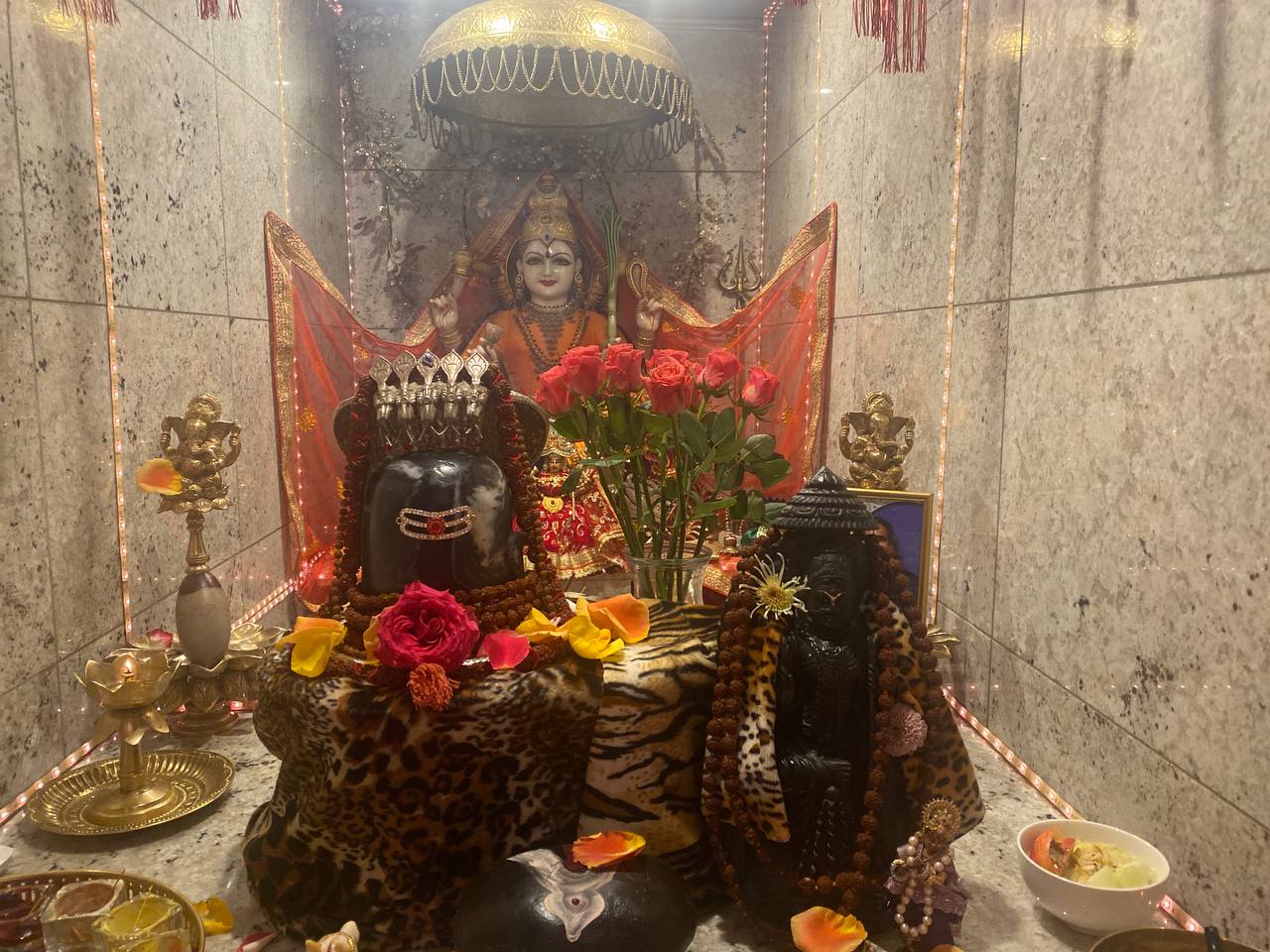
SHIVA & KAMAKSHI-DEVI LILAS
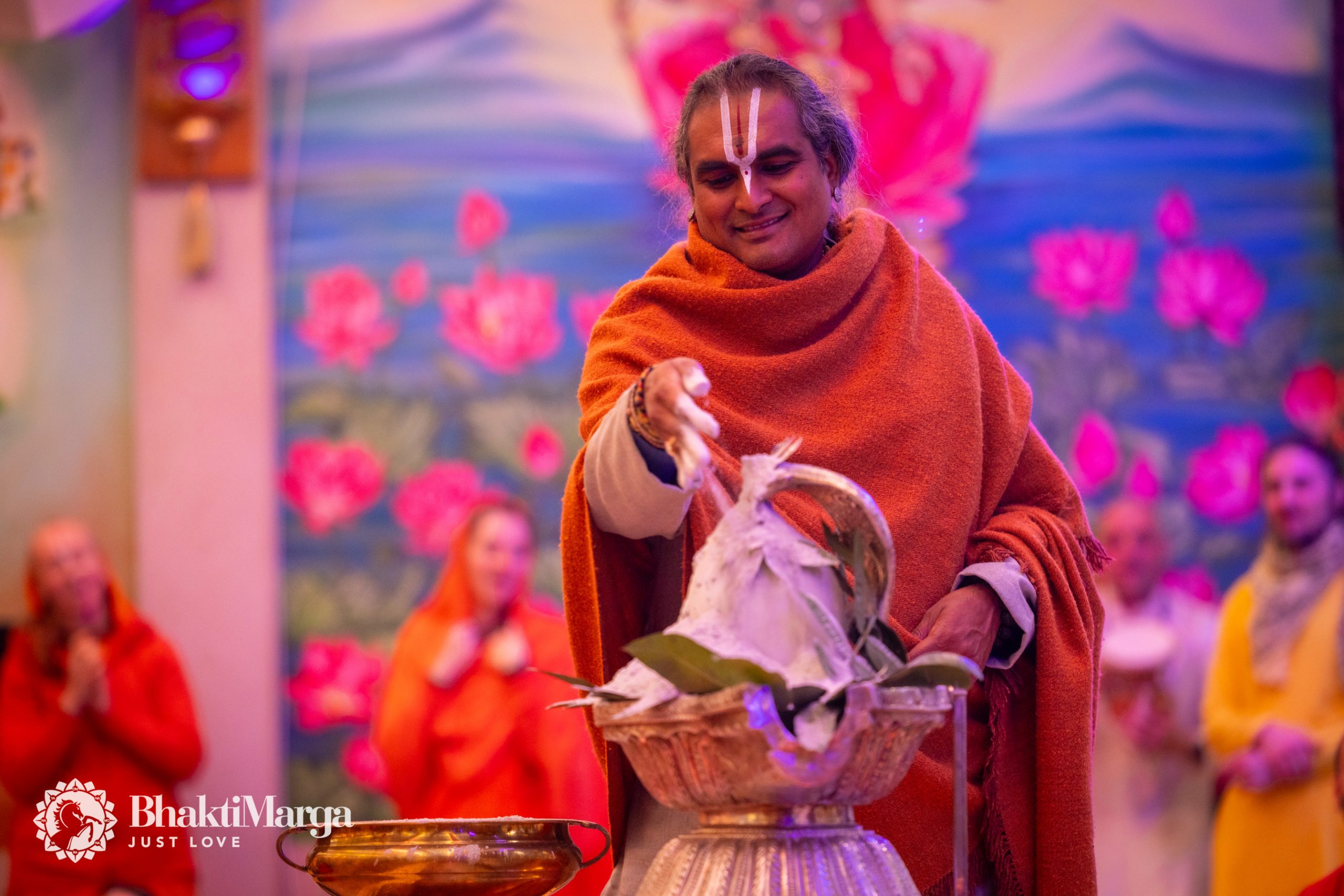
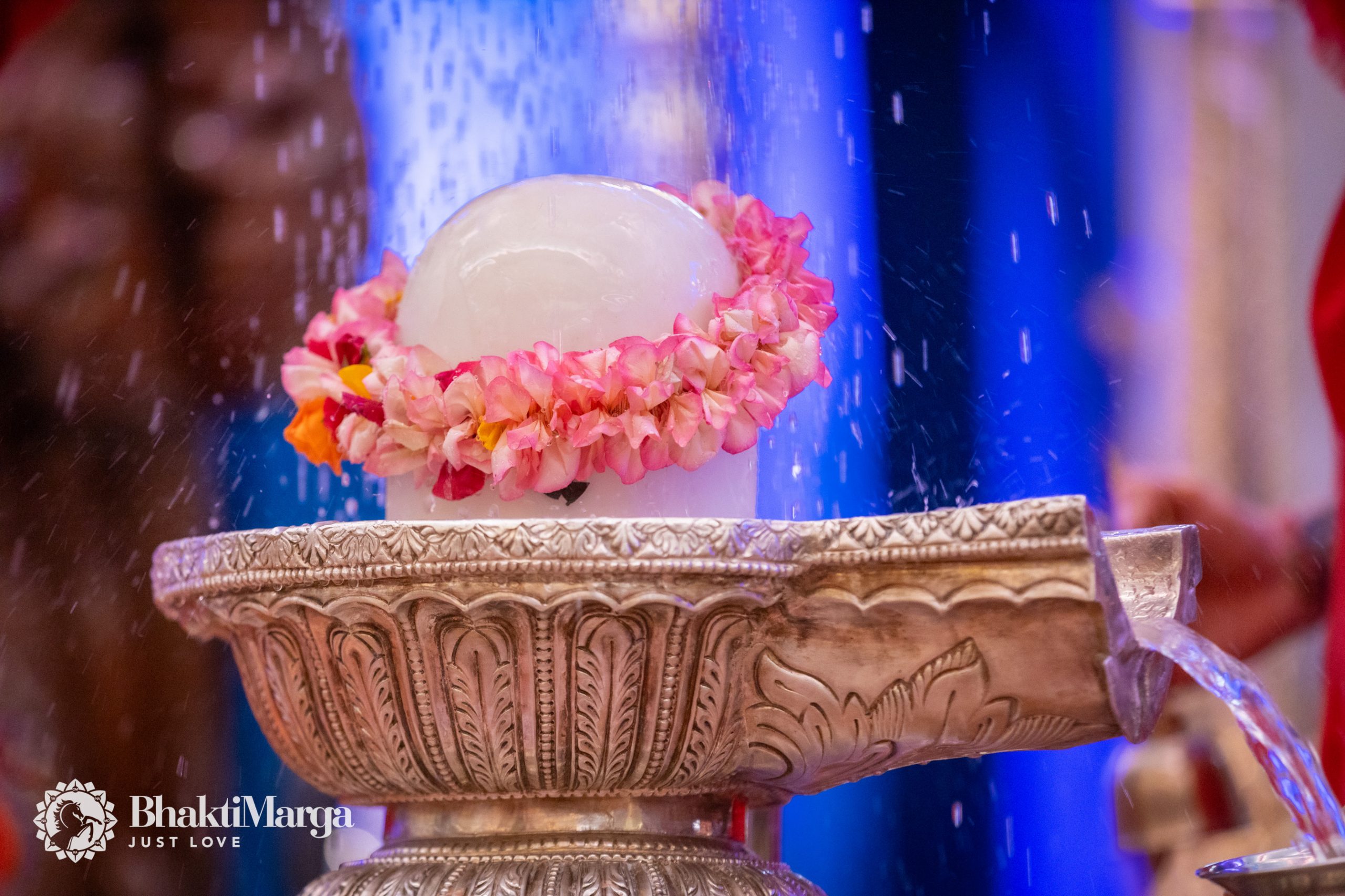
The Journey from Lord Śiva to Sri Hari
Rishi Vrishaparva first visited the āśrama in 2018, staying for a few days at a time.
Before becoming a devotee, he knew that devotion often centered around an iṣṭadeva, but he wasn’t sure who his was. With no strong connection to Vaiṣṇavism, he wondered which deity would truly call to his heart.
“I wondered if Lord Kṛṣṇa or Lord Rāma could be my iṣṭadeva, but I felt a stronger connection to Lord Śiva. Though not a Śaivite, I was drawn to His path—yoga, meditation, and devotion. Even after initiation, this bond remained. I kept a Śiva liṅgam and worshipped Him every Monday.”
“One day, Guruji told me that if I stayed longer, I should serve in the temple, which felt like a great blessing. Later, when I stayed for a month and asked to serve, He assigned me to Ram Darbar.”
“Ram Darbar already had many pūjārīs, while only one served Śiva and Kāmākṣī-devī. Since Swami Aniruddha, the main pūjārī, traveled often, Nityaparama managed everything mostly alone, so Swami Keshava asked Guruji if I could serve Śiva and Kāmākṣī-devī instead, and He agreed.”
“I was overjoyed. I had always loved being near the Śiva liṅgam and felt already a bond with the pūjārīs.”
He started gradually, performing pūjā during events and extended stays. Each time, he served for a few weeks before returning home.
But the first time he performed pūjā for Śiva and Kāmākṣī-devī was a turning point. When he returned home, he realized he could no longer live as before. Serving in the temple made it clear that his path was that of a brahmacārī.
“I truly enjoyed it and after becoming a brahmacārī and a resident of the āśrama, I started serving Śiva and Kāmākṣī-devī regularly. I now feel closer to my Vaiṣṇava side and my connection with Lord Śiva has changed in some ways, but my bond with Him remains—especially with the Śiva liṅgam, which resonates deeply with me.”
And then there’s Kāmākṣī-devī. She has always been my closest connection to the Divine Mother. Whenever I pray, she naturally comes to mind—it’s effortless. That connection has always been there and still is, which is truly beautiful.”
His Vaiṣṇava connection has deepened but for him, worshiping Śiva and Kāmākṣī-devī naturally strengthens devotion to Sri Hari. His understanding of Lord Śiva has also evolved—he doesn`t see Him just as a yogi anymore but as one deeply connected to Rāma, always meditating on Him.
Now, he finds inspiration in always remembering and chanting God’s name.
“For me, chanting is the most important practice—it’s the heart of my spiritual path.
Everyone has their focus, but what I love most from Guruji’s teachings is the power of chanting. I enjoy reading about saints who emphasize this practice, and for me, Lord Śiva embodies that devotion.
My relationship with Lord Śiva is about deepening my absorption in the Divine. In the beginning, I struggled with contradictions. When I first heard Swami Revatikanta say Sri Hari is the highest, I couldn’t understand why. I needed to know for myself.
So I studied different philosophies, searching for clarity. Over time, with Lord Śiva’s blessing, Vaiṣṇavism became part of me. I no longer saw Lord Śiva as the ultimate path but as a guide leading me to Sri Hari.”
When asked to share about mystical experiences or visions, Rishi Vrishaparva said he doesn’t have any, but he can feel whether Śiva and Kāmākṣī-devī are pleased with the service.
“I don’t always know exactly what they prefer—it seems to change—but it depends on how we approach it. With Lord Śiva, sometimes dressing the liṅgam with a mask, snake, and dhoti feels right, while other times, simplicity is better. Each morning, I try to sense what feels best and offer something meaningful with pure intention.
If I overthink, things become unclear. When that happens, I just go with what feels right. If an offering doesn’t seem accepted, I don’t feel at peace until I change it.”
Guruji often visits, placing His head on the liṅgam and praying to Kāmākṣī-devī with deep love. When the pūjārīs bring Him the āratī lamp, He receives it with such devotion that His connection to Śiva and Kāmākṣī-devī is unmistakable.
Since childhood, Guruji has longed to worship the Śiva liṅgam, and Kāmākṣī-devī was beside Him for years in the old temple at Shree Peetha Nilaya.
Kāmākṣī-devī, a unique aspect of Pārvatī, symbolizes mastery over the senses. Her name, meaning “the one with eyes full of desire,” reflects Her role in helping devotees overcome worldly attachments and turn inward.
Both Śiva and Kāmākṣī-devī guide seekers by removing distractions and drawing the mind toward spiritual focus.
“My relationship with Guruji grew in a unique way through Śiva and Kāmākṣī-devī.
When I first started on the spiritual path, I was searching for meaning. I watched different gurus on YouTube, looking for answers that satisfied my mind. Then, I found Guruji.
At first, I only saw him in satsaṅgs and didn’t know him personally. Unlike other gurus who spoke to the mind, Guruji spoke about love. I didn’t fully understand his words, but I felt something deep inside. It was as if, in Him, I had found the meaning of life. Even though my mind couldn’t grasp it, my heart knew it was true.”
Rishi Vrishaparva’s journey from Lord Śiva to Sri Hari is still unfolding, as his service in the temple has now shifted to Lord Ranganatha, with the blessings of both Lord Śiva and Guruji. We might just hear more of his inspiring journey in the months to come!
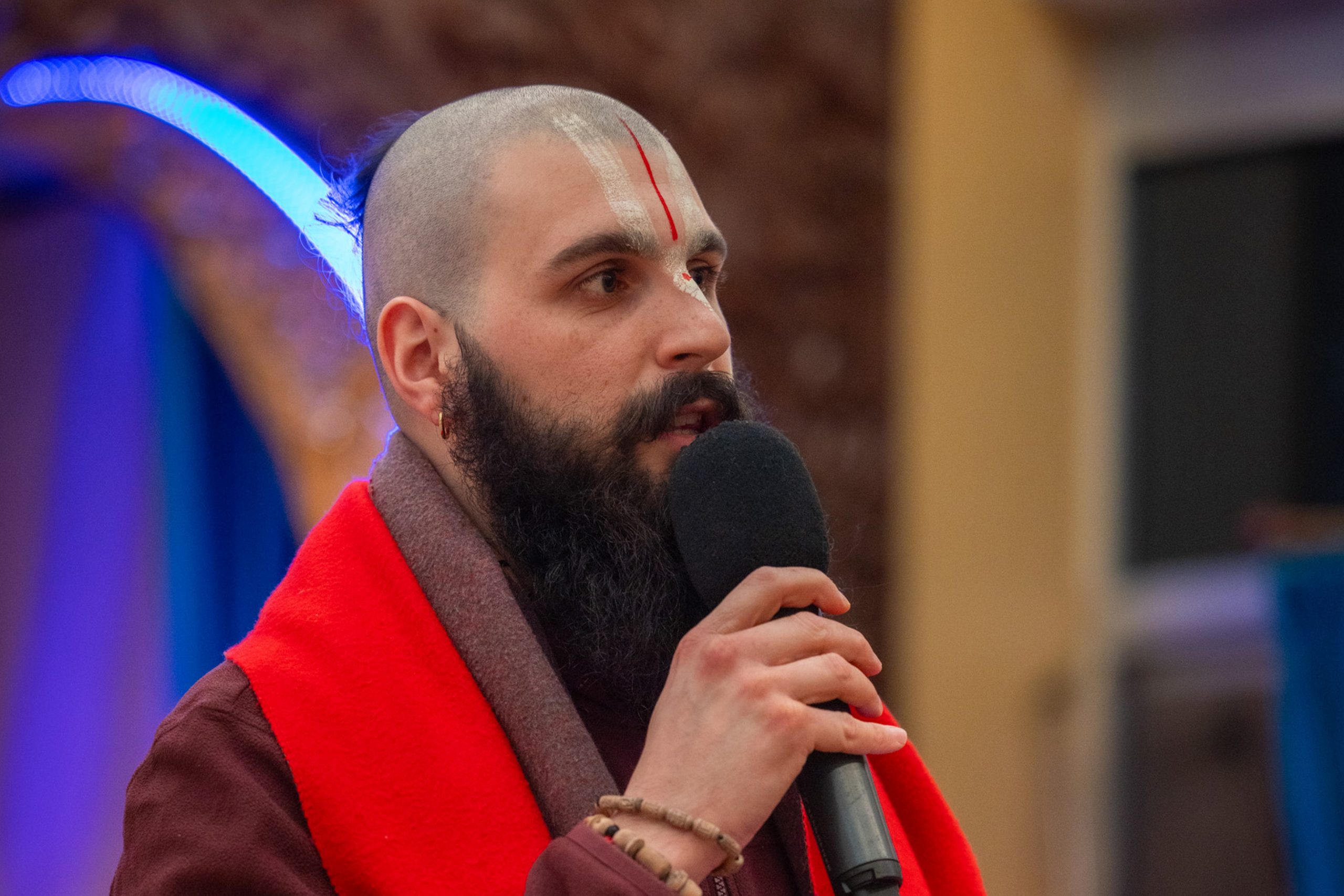

Nityaparam’s Journey from Exploration to Devotion
“When I first arrived at the āśrama, I had only been there a few months when Guruji gave me an incredible opportunity—to serve in the temple. I didn’t know which deity I would serve. He simply told me, ‘Prepare yourself.’”
“In early 2019, just before a resident pilgrimage, I found out I would be serving in the temple for ten days. I wanted to do my best, so I focused on preparing as much as I could. After some time, I learned that I would be serving Rādhā-Durgā. I started my training, but just two days before the pilgrimage, another pūjārī approached me and said, ‘Since you’re already here for Rādhā-Durgā, you can also serve Śiva and Kāmākṣī-devī.’”
“I was surprised but ready for the challenge. Without hesitation, I said, ‘Okay, sure! I’ll do my best.’ Those ten days were an unforgettable experience. I had the honor of serving not just one, but three deities!”
The period was intense, filled with challenges and learning. When asked what was most difficult—dressing the deities, performing the puja, or waking up early—his answer was simple: everything. He had to figure out how to dress the deity and perform the puja on his own, learning through trial and error and making some mistakes along the way.
“The deities were very forgiving, and despite my mistakes, the experience was incredible. After ten days, when the residents returned, my service in the temple ended. I felt deeply sad, thinking, ‘That was a once-in-a-lifetime chance, and now it’s over. I’ll never get another opportunity to serve in the temple again.’”
Weeks passed, until, out of nowhere, Swami Anirudha asked Nityaparam if he wanted to serve Śiva and Kāmākṣī-devī again. He immediately said yes. Swami was about to travel for five weeks, and the other pūjārī also had to leave for medical reasons, so they needed someone to step in.
The next day, the pūjārī showed him what to do, and suddenly, he was the only one left to serve once again. When they returned, he became part of the team, serving Śiva and Kāmākṣī-devī regularly. Since he was still new and didn’t know much about them, he wanted to learn more and deepen his connection.
“I wanted to feel closer to Śiva and Kāmākṣī-devī. Every morning, I read Lord Śiva names, and in the evening, I read Kāmākṣī-devī`s. Lord Śiva`s many names amazed me and gave me ideas for decorating Him in the morning. I learned their meanings and stories, trying to show them in each decoration. Every abhiṣeka needed careful planning to bring each name to life.
Sometimes, I asked Swami Anirudha for advice. Then, with the other pūjāris, we would think of creative ways to decorate Lord Śiva to match His name.”
Once, while contemplating the name Om Ashtamurtaye Namaha, which means “Obeisances to the Lord who has eight forms”, they discussed different ways to depict them. The next morning, for abhiṣeka, they gathered various representations—placing a Hanumān mūrti behind Lord Śiva, bringing a large tāṇḍava Śiva from the Babaji cave, and arranging other sacred symbols. The setup was elaborate and full of meaning.
Another time, in honor of the name Om Digambaraya Namaha, which means “Obeisances to Lord Śiva, whose robe is the cosmos”, they decorated Lord Śiva as the center of the universe, draping a dark cloth around him and surrounding him with flowers to symbolize creation. They even borrowed cosmic-themed decorations from the main altar to enhance the effect. Some decorations turned out beautifully, while others were experiments—but Guruji gave the pūjārīs complete freedom, loving the devotion behind every effort.
“Guruji’s behavior was interesting to watch. Sometimes, He walked by in silence, looking at everything. Other times, He stopped during pūjā or āratī and gently made small changes ‘Move this, put that here.’”
“One moment I will always remember is when Guruji arranged for a special golden mask for Lord Śiva. He personally asked for the right measurements to make sure it fit perfectly. When it arrived, we placed it on Lord Śiva during the morning abhiṣeka, but Guruji corrected us: ‘Put it on at four in the afternoon, just before opening the curtain.’ He didn’t explain why, but there was always a reason behind his guidance, even if we didn’t understand it at the time.”
One day, Nityparam decorated the liṅgam in honor of the name Om Havishe Namaha, which means, “Obeisances to Lord Śiva who receives oblations of ghī”. Since ghī is a key element in Yajña, he covered Lord Śiva in ghī and arranged a Yajña plate with all the traditional offerings, along with ghī pots.
“That evening, Guruji came and noticed the setup. Seeing the ghī that had been collected from the liṅgam in a bowl, He smiled, took some, and rubbed it on His knee. At that time, He was experiencing knee pain and used the blessed ghī as a remedy. Moments like these showed the deep, loving connection between Him and Lord Śiva.”
Nityaparam`s service and focus evolved over time:
In the beginning, when he performed pūjā or abhiṣekam, he was often distracted. As he faced the deities in the temple, there was constant movement behind him—people walking, doors opening, guests arriving. It felt unsettling, making it hard to stay fully immersed.
At first, his mind kept drifting to the noise, the footsteps, the presence of others. But over time, something shifted. The external distractions lost their grip on him, and his focus turned completely toward the deity. The sounds and movements that once pulled him away no longer mattered.
Meanwhile, he became a Rituals Teacher, and when asked what advice he would give to those just beginning to perform pūjā, his response was simple and direct:
“Practice pūjā every day, in your own space—at home, in your room. Without daily practice, you won’t truly understand it, because experience is everything.”
“I could spend ten hours explaining the theory, but in the end, it all comes down to one thing—sit down and do the pūjā. Challenge yourself. Even if you don’t feel anything at first, commit to it. Try it for a week, maybe two. Every morning or evening, perform the pūjā, and only after that, evaluate: Do I continue? Do I stop?”
“Because then, something happens. One day, you feel nothing. Another day, the mūrti seems alive. Another time, you might sense the deity wanting to be dressed a certain way or longing for a specific bhajan. These experiences are deeply personal. Through them, you interact with the divine.”
“Looking inward isn’t always easy, but through pūjā, focus sharpens, and the relationship with the divine deepens. Over time, the divine is no longer just within—you begin to experience it all around you.”
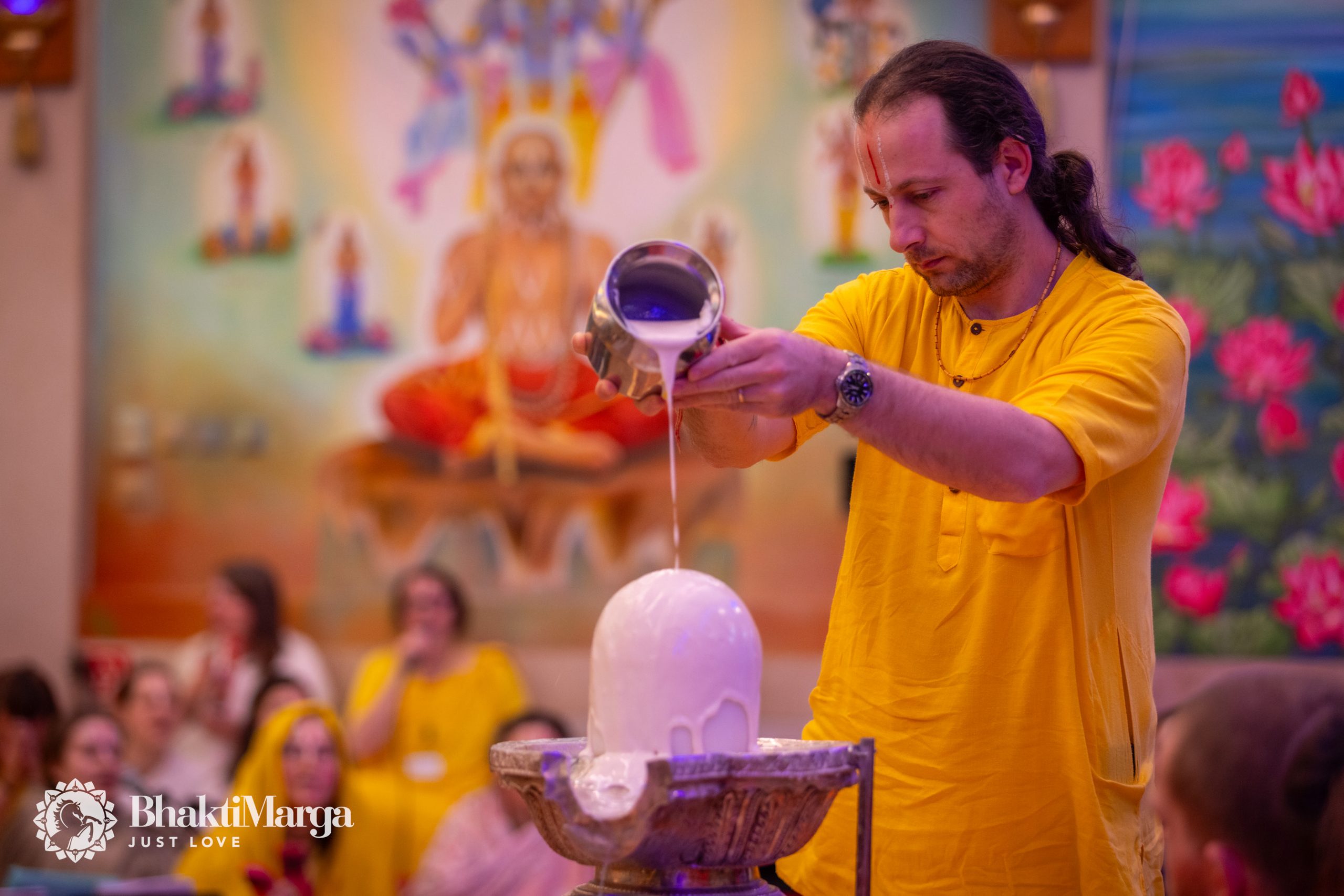
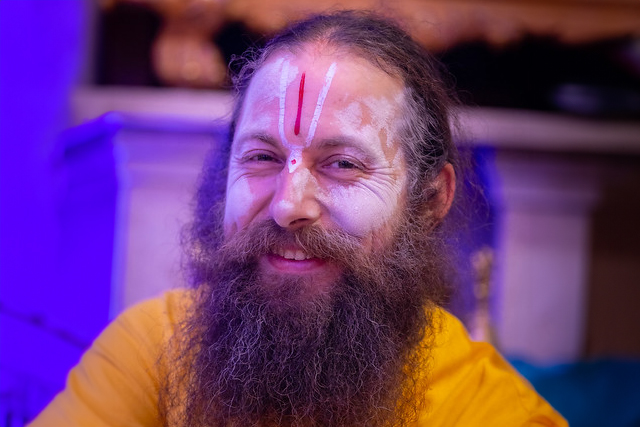
Serve those who serve us all!
Bhutabhrteshwarnath Mandir is a place where we come together to pray and grow in our spiritual journeys. The rituals and prayers help us feel closer to the Divine and remind us of our faith. If you feel a calling to deepen your relationship with the Divine, one way to do this is to support our temple. Join our donation program with the link below and help us continue the wonderful work of our beloved Gurudev. Together we can spread the grace of the Lord and bring more positivity to the world!
“The acts of sacrifice, charity and austerity should not be given up, but should be performed. For these acts purify even the wise.” Bhagavad Gita, Chapter 18, Verse 5
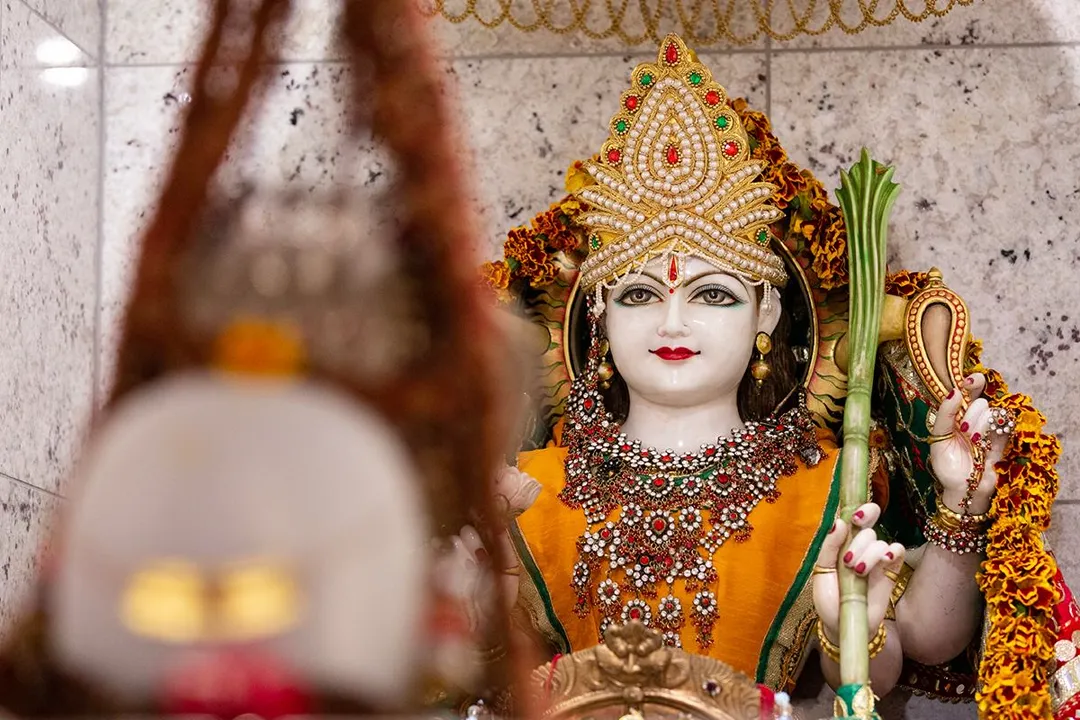
Rewatch Paramahamsa Vishwananda`s Satsang

“You are the consciousness, you are the atma. So surrender the rest you don’t need to the Feet of Shiva. He knows how to destroy it.”
All Blog Posts
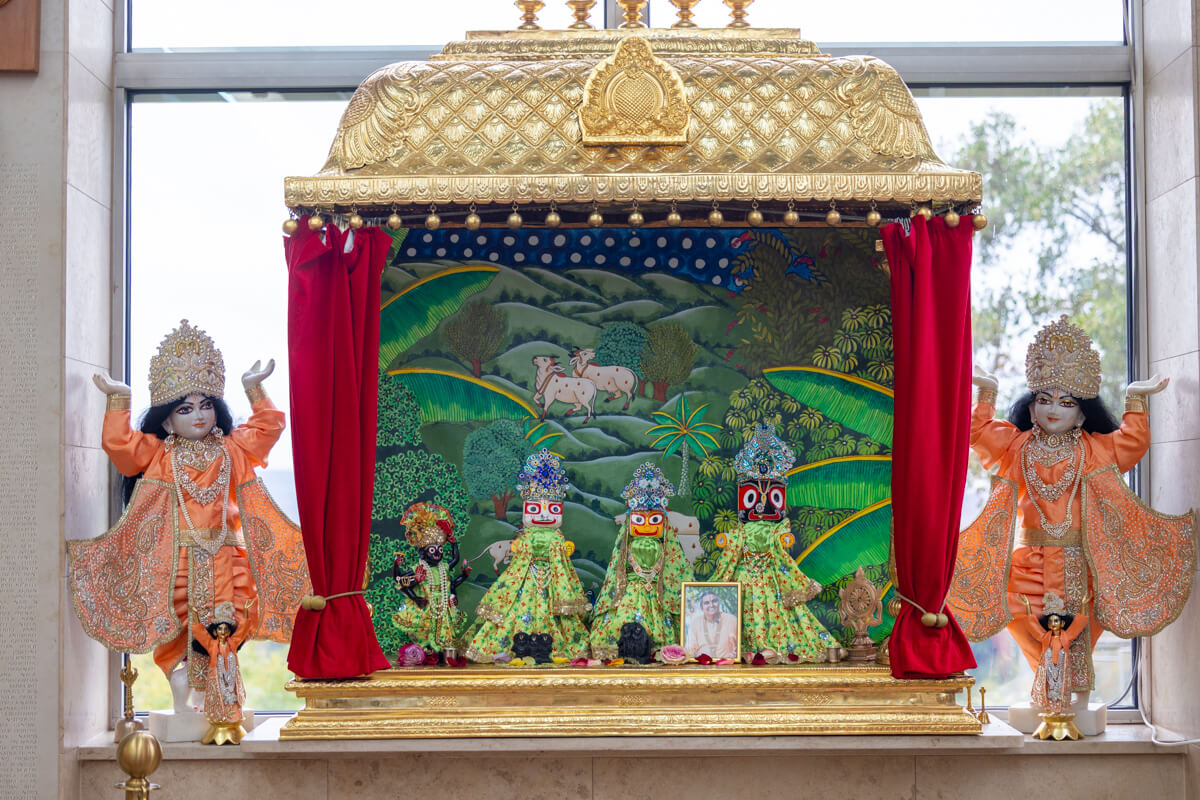
Sri Jagannatha and Gaura Nitai’s Lilas
Śrī Jagannātha, a manifestation of Śrī Kṛṣṇa Himself, embodies the all-embracing form of God who offers His love and mercy to everyone, regardless of background.
November 2025
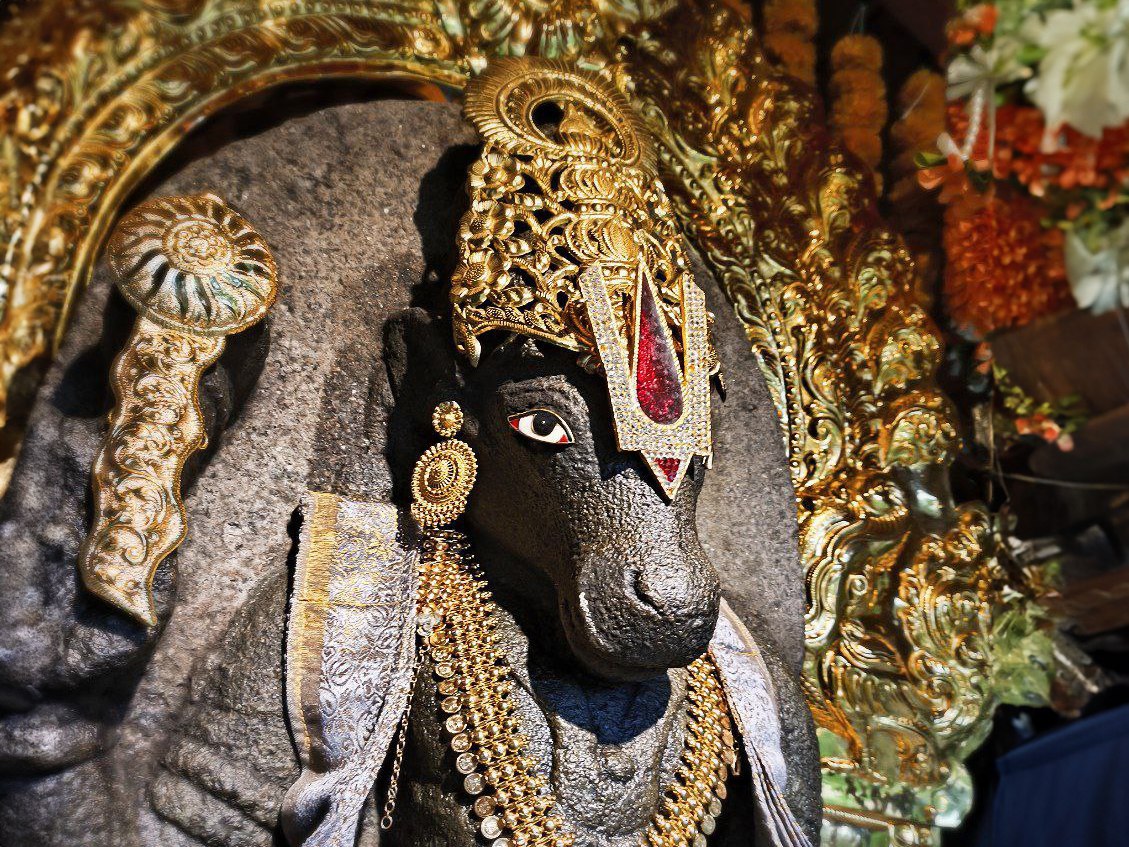
Lord Varaha`s Lilas
Lord Varāha is a boar incarnation of Bhagavān, particularly renowned for His act of saving Mother Earth from the demon Hiraṇyākṣa.
September 2025
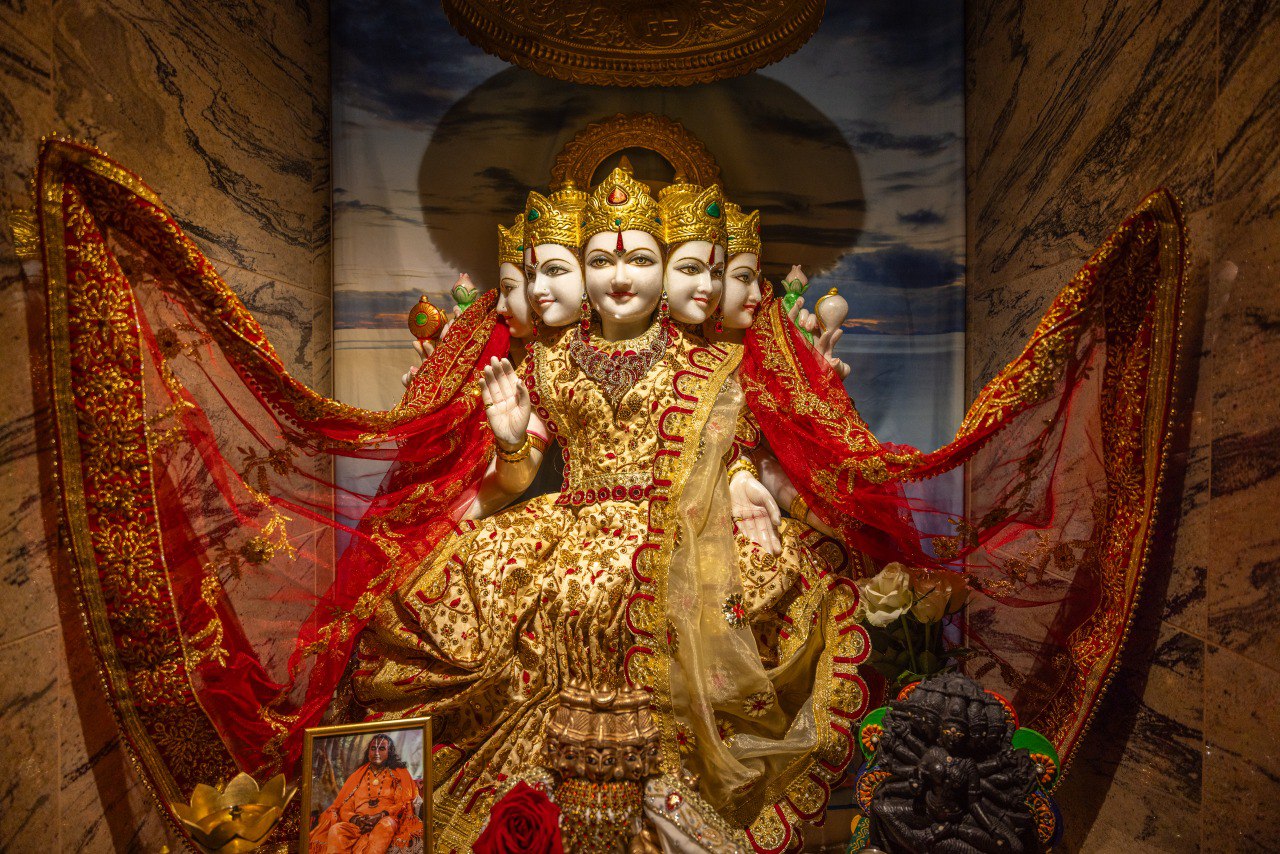
Gayatri Devi`s Lilas
Gāyatrī-devī, a radiant aspect of the Divine Mother, is revered as the source of wisdom in Hindu tradition. As the divine origin of the Gāyatrī-mantra, She embodies purity, clarity, and higher learning.
July 2025
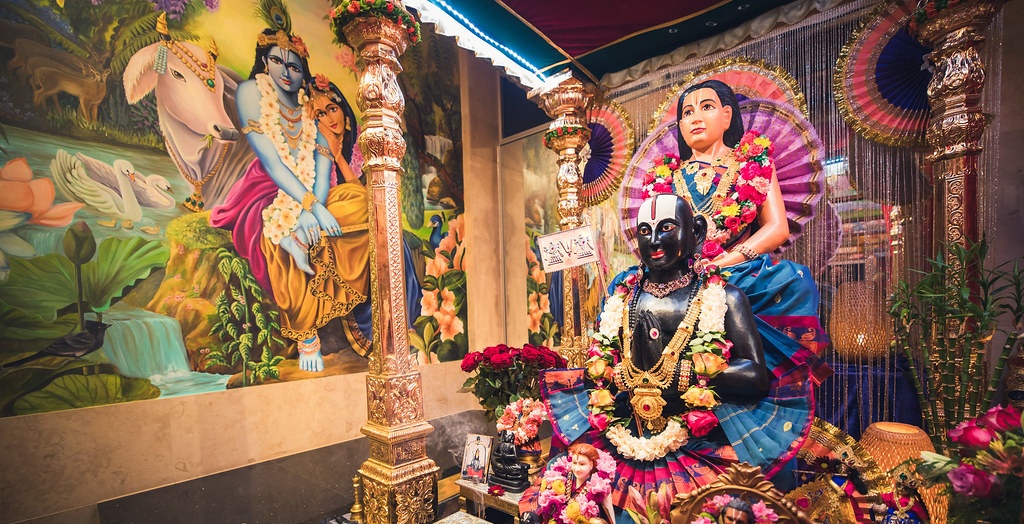
The Masters`s Lilas
At Shree Peetha Nilaya, The Masters— Śrī Rāmānujācārya, and Mahāvatāra Bābājī —are deeply cherished by devotees. Their lives of selfless service and deep devotion continue to inspire us.
May 2025

Shiva & Kamakshi Devi`s Lilas
Lord Śiva, one of the Trimūrti, embodies love, service, and devotion, holding a special place in the hearts of his devotees. His divine counterpart, Kāmākṣī-devī, a powerful form…
March 2025
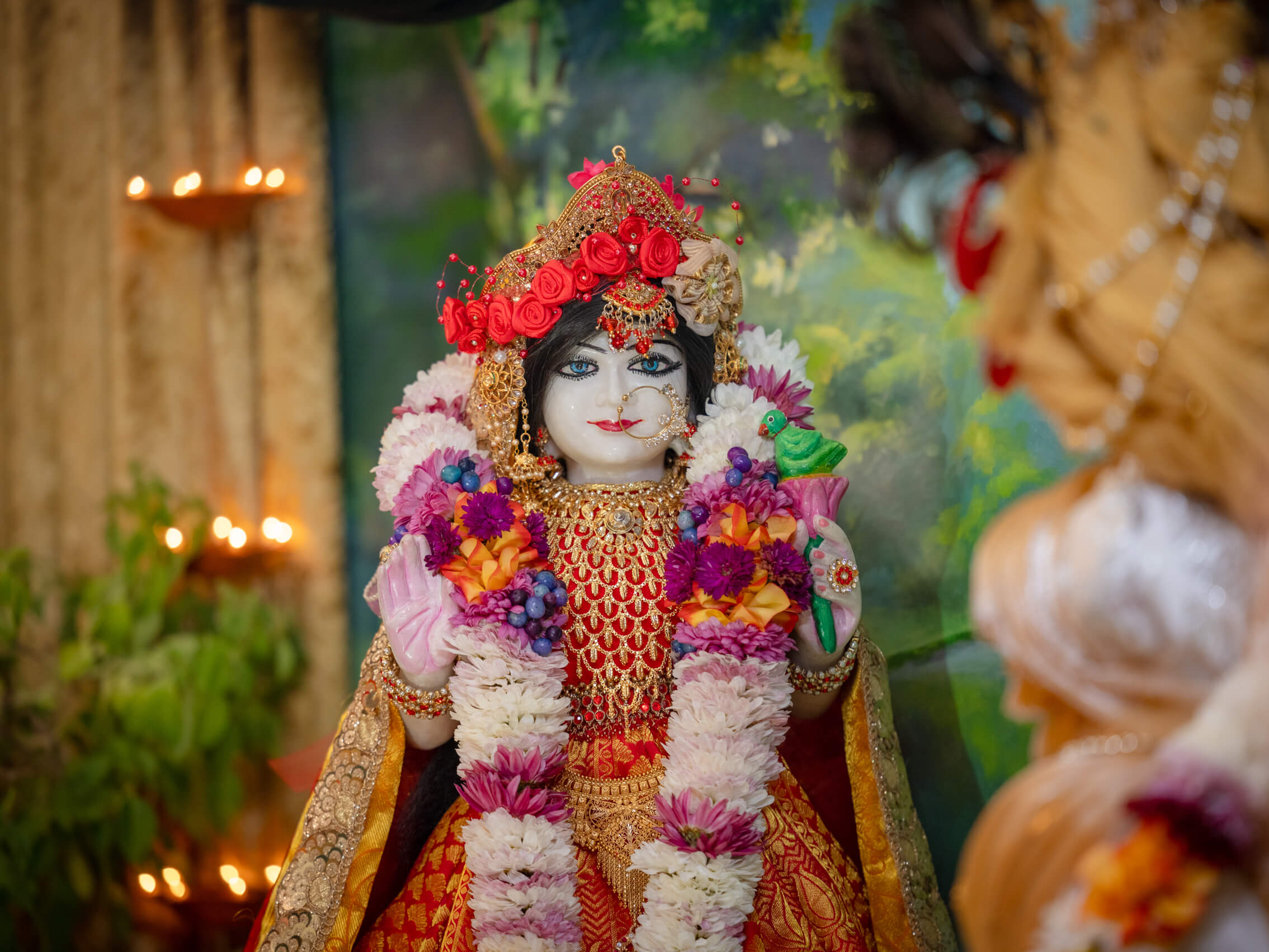
Tulsi Devi`s Lilas
Tulsī-devī is more than a plant—She is a living presence of love and devotion that touches the hearts of all who serve Her.
January 2025
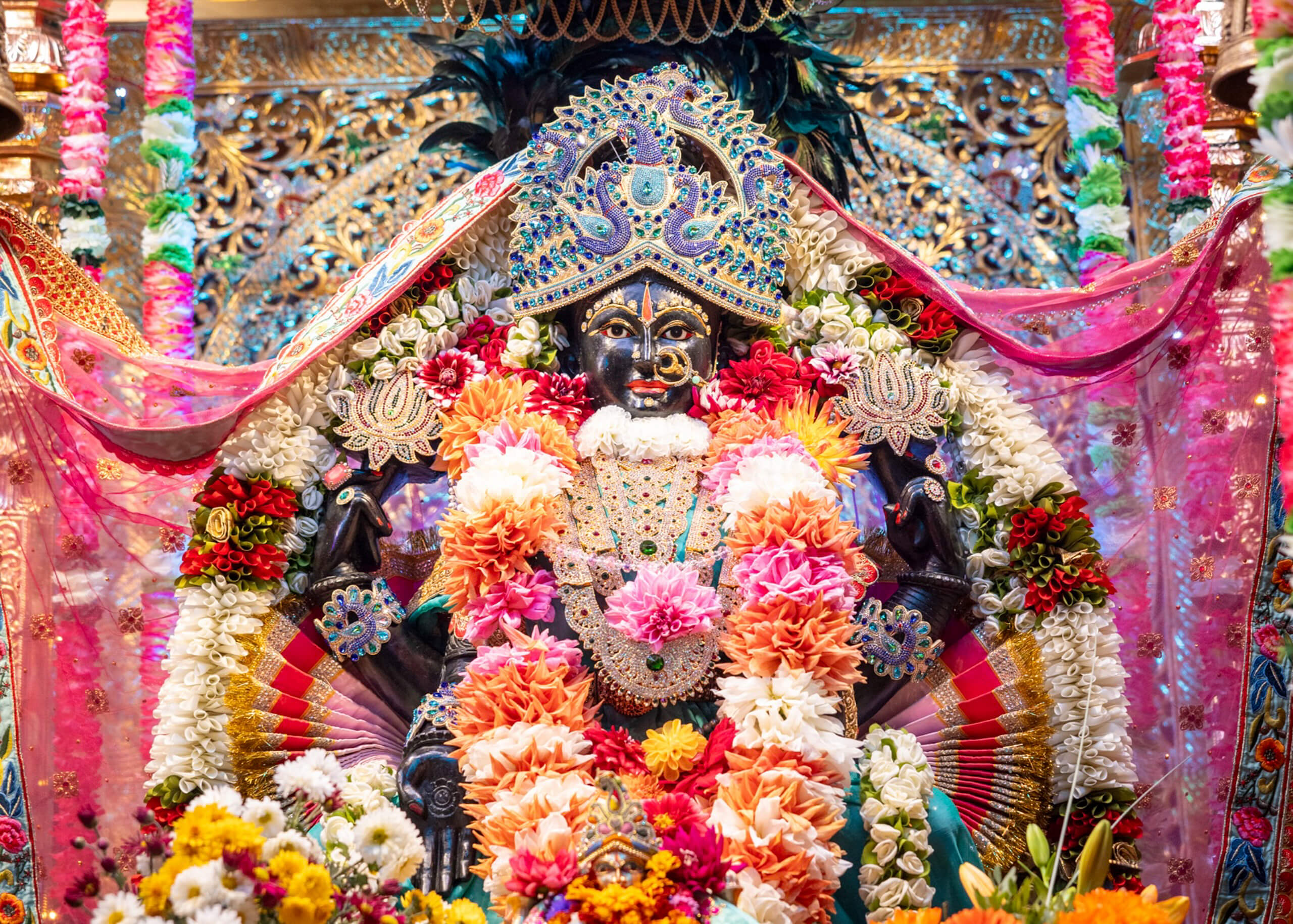
Maha Lakshmi`s Lilas
Maha-Lakshmi, the beloved wife of Lord Narayana, fills our lives with blessings, peace, and kindness.
November 2024
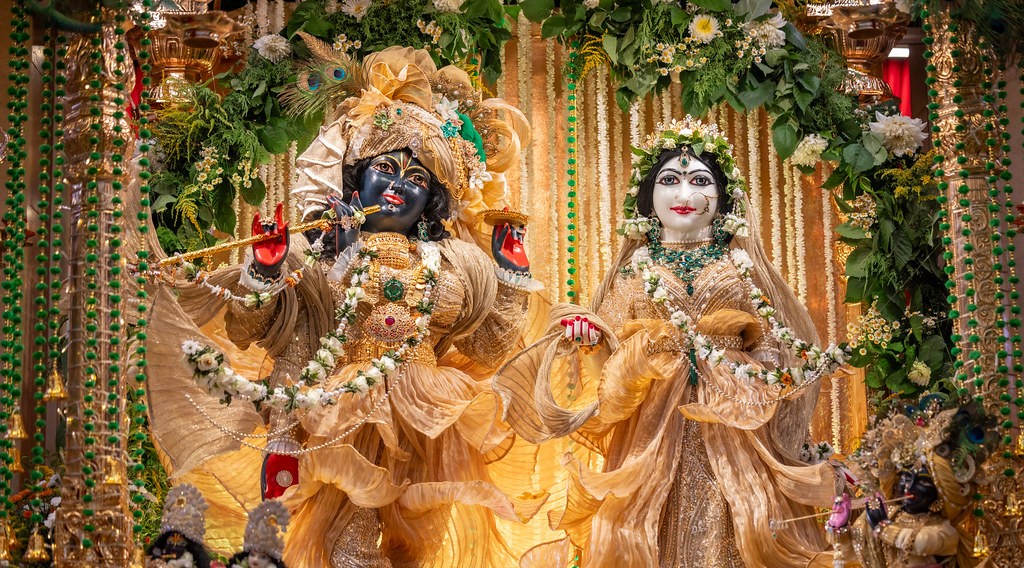
Radha Krishna`s Lilas
Radha and Krishna, residing in the Bhutabhrteshwarnath Mandir at Shree Peetha Nilaya, were lovingly named ‘Kripanidhe’ by Guruji, meaning ‘the ones who are full of mercy and grace’.
October 2024
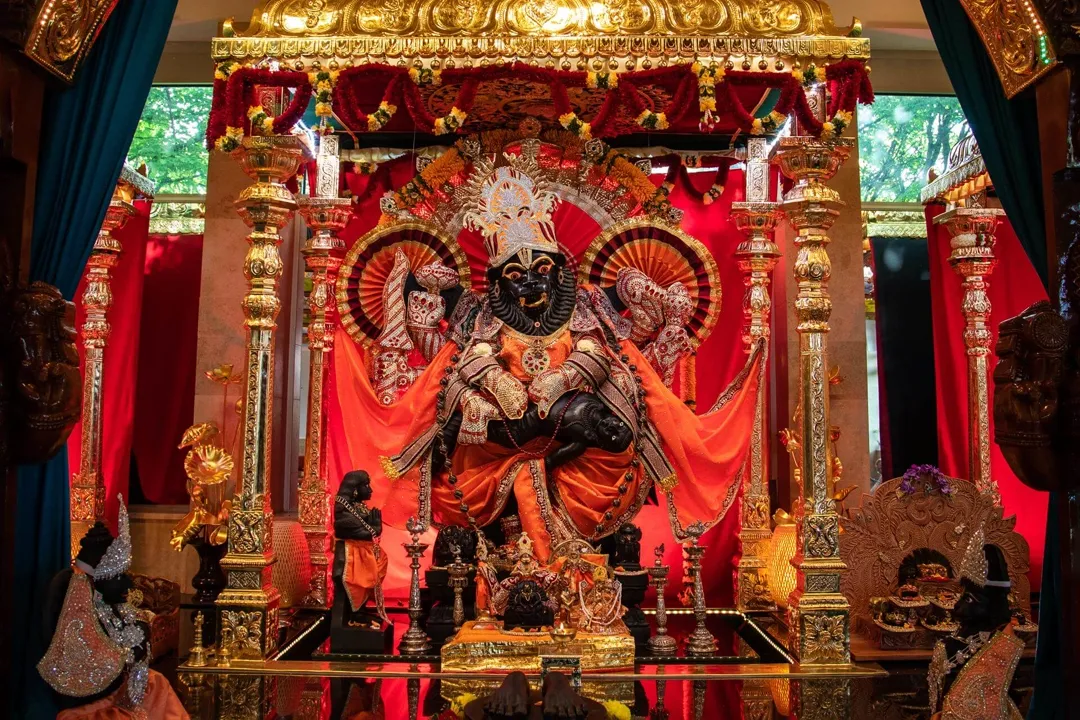
Lord Narasimha`s Lilas
At the Bhutabhrteshwarnath Mandir in Shree Peetha Nilaya, Lord Narasimha, who is both fierce and gentle, is not just respected but also truly loved by His devotees.
September 2024